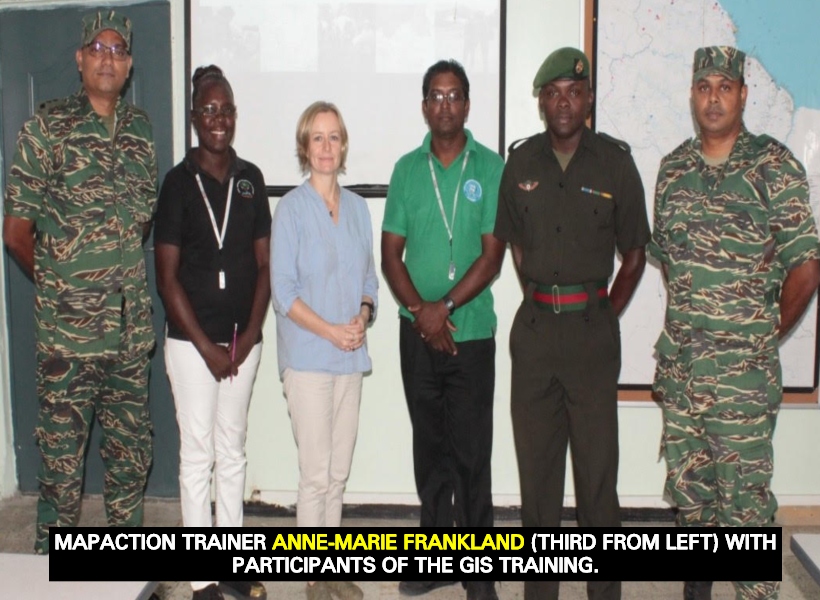The Civil Defence Commission (CDC) in partnership with United Nations International Children’s Emergency Fund (UNICEF) and MapAction held a-two-week training for staff members who are now able to produce various Geographic Information Systems (GIS) related deliverables.
GIS is a framework for gathering, managing, and analysing data. It analyses spatial location and organises layers of information into visualisations using maps and 3D scenes. The training covered mapping for humanitarian response, data collection using smart phones and Global Position Systems (GPS), updating the CDC’s caseload map using QGIS and several other areas.
Director General, Lieutenant Colonel Kester Craig, stated that the CDC is embracing technology to improve efficiency. With the use of GIS, mapping community related hazards in projects such as the community-based disaster risk management system will become easier.
In relation to response concerning the influx of migrants from Venezuela, GIS will now enable staff to create maps which will highlight where relief items were distributed, locations of migrants, and entry points. It will play a key role in monitoring the influx of migrants and where other stakeholders are currently working so as to avoid duplication.
A duty officer of the CDC related that mapping plays a key role in the activities of the CDC and with the training they would be able to carry out their duties more efficiently since GIS based maps and visualisations greatly assist in understanding situations when responding to disasters, providing relief, and other functions of the CDC.
Lieutenant, Lakshman Persaud, stated that the CDC is better prepared to spatially represent data on migrants and responses by various agencies in the regions. He continued that the training of more staff in this area ensures continuity within the CDC. Other participants of the training stated that they were grateful to MapAction for providing their services.
MapAction, founded in 1999 is a nongovernmental organisation based in the United Kingdom and specialises in providing mapping for humanitarian emergencies. They provide training in GIS, and GPS for several humanitarian organizations that include the United Nations and the International Federation of Red Cross and Red Crescent Society.













